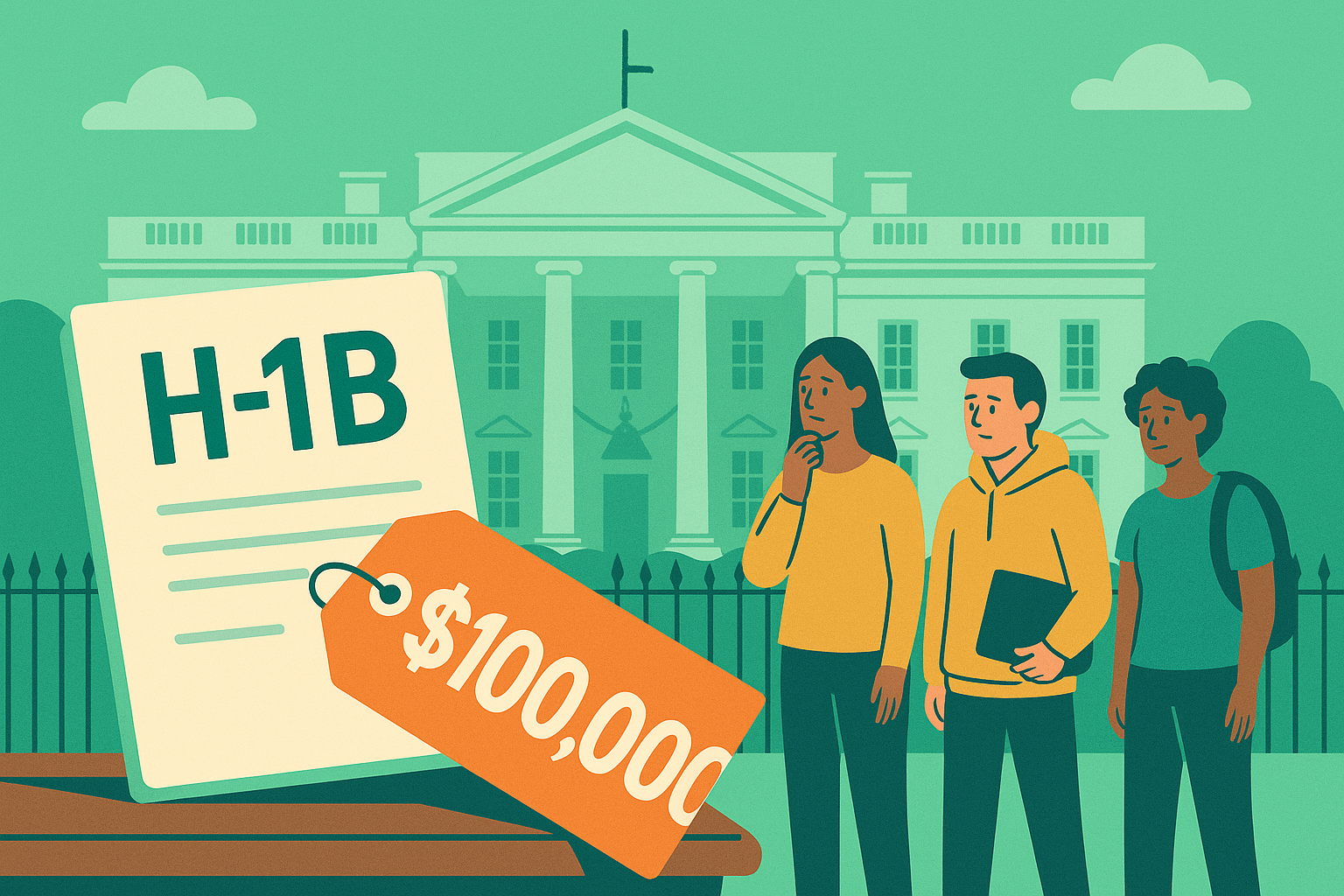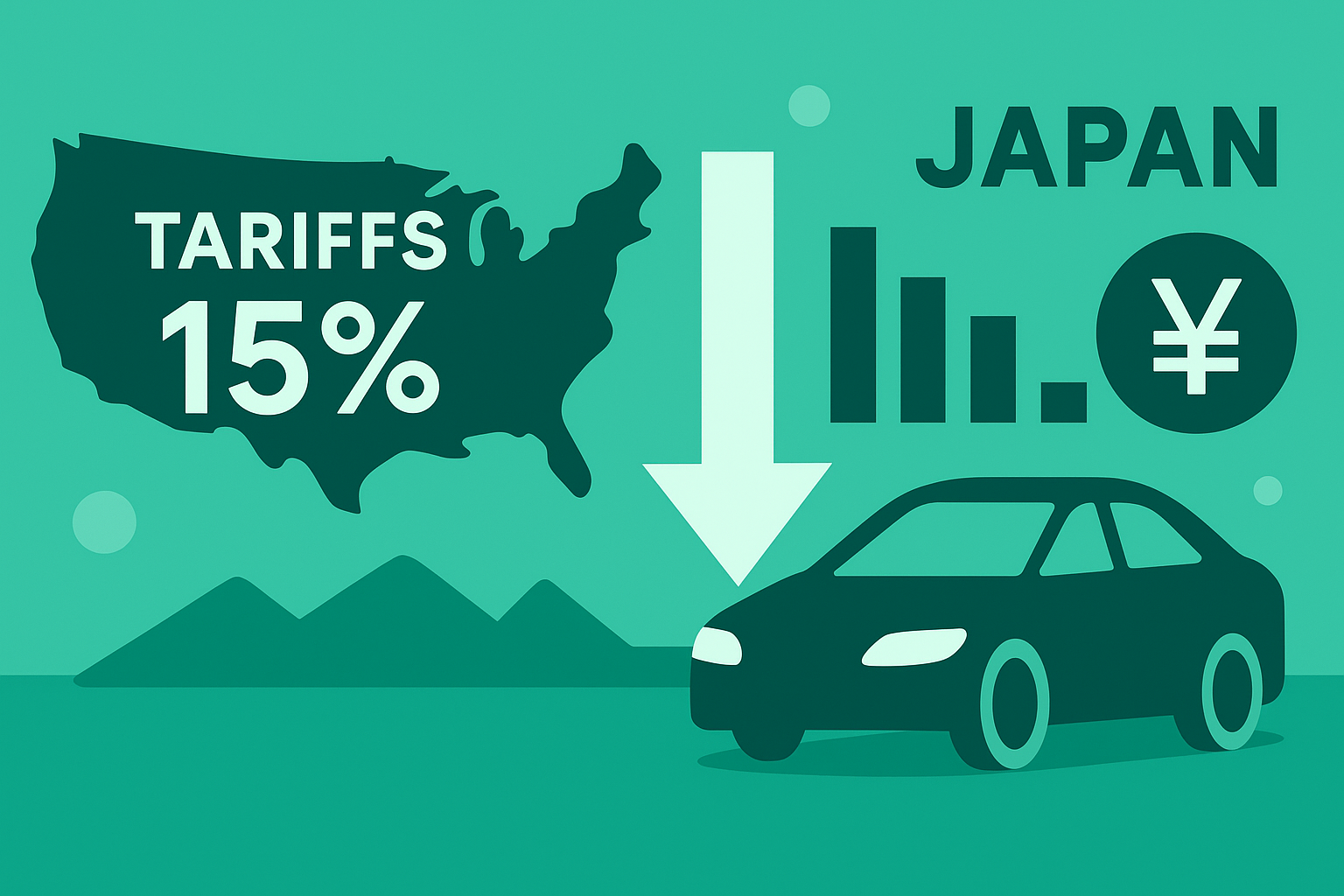Wrote by:Global Economist / September 21, 2025
Trump’s New Policy Rocks Tech Industry and Global Talent Markets
What Just Happened
President Trump signed a proclamation on Friday imposing a $100,000 fee for H-1B visa applications, effective today at 12:01 a.m. EDT. This represents a staggering 465x increase from the current $215 base fee and marks the most dramatic change to U.S. skilled immigration policy in decades.
The Bottom Line: The fee “applies only to new visas, not renewals [or] current holders,” according to White House Press Secretary Karoline Leavitt, but the impact on global talent flows will be profound.
Key Details
What’s Covered
- New H-1B petitions only for workers currently outside the U.S.
- One-time fee, not annual as initially suggested
- 12-month duration (subject to extension)
What’s Exempt
- Current H-1B holders and renewals
- Applications filed before September 21, 2025
- National interest exemptions available at DHS discretion
The Clarification Crisis
Initial confusion led to panic among visa holders traveling abroad, prompting Google and Meta to advise visa holders to reconsider international travel plans and to consider returns to the United States by Saturday night. The White House quickly clarified that current H-1B visa holders who are currently outside of the country will not be charged $100,000 to re-enter.
Why This Matters
The Numbers Game
- 85,000 H-1B visas issued annually (plus 20,000 for advanced degrees)
- ~70% from India, making it the largest affected country
- Amazon leads recipients with over 10,000 approvals in 2025
- Median salary: $120,000 for H-1B workers
Government’s Rationale
The Trump administration cites specific examples of abuse: One software company was approved for over 5,000 H-1B workers in FY 2025; around the same time, it announced a series of layoffs totaling more than 15,000 employees.
Immediate Market Impact
Corporate Emergency Response
Major tech companies scrambled:
- Microsoft, JPMorgan, and Amazon had responded to the Friday announcement by advising employees holding H-1B visas to remain in the United States
- Legal teams working overtime to assess implications
- Some travelers changed flights mid-journey to return before the deadline
Financial Implications
- Cost explosion: From ~$215 to $100,215+ per application
- Tech stocks volatile amid uncertainty
- Indian IT services companies facing particular pressure
Global Competitive Shift
Winners and Losers
Countries Likely to Benefit:
- Canada: Express Entry system becomes more attractive
- Australia: Skilled migration programs gain competitive edge
- EU: Blue Card program could see increased interest
Sectors Under Pressure:
- Technology: Highest H-1B dependency
- Indian IT Services: Business models under threat
- U.S. Startups: May struggle with talent costs
India’s Challenge
As the largest source of H-1B workers, India faces:
- Potential billions in lost IT services exports
- Strain on U.S.-India strategic partnership
- Accelerated interest in alternative destinations
Investment Implications
Stock Picks and Pans
Potential Headwinds:
- H-1B dependent tech giants (Amazon, Microsoft, Google)
- Indian IT services (TCS, Infosys)
- U.S. companies with high foreign talent dependency
Potential Beneficiaries:
- Canadian tech companies (Shopify, others)
- Domestic training/education companies
- Immigration law firms
Currency Watch
- Indian Rupee: Pressure from reduced remittances
- Canadian Dollar: Possible strength from talent influx
- Tech sector bonds: Credit risk reassessment underway
What’s Next
Short-term (Next 3 months)
- Legal challenges from tech industry associations
- DHS guidance on national interest exemptions
- Application volume data from next H-1B lottery
Medium-term (3-12 months)
- Wage inflation in U.S. tech sectors
- Offshore expansion by American companies
- Alternative visa usage patterns (O-1, L-1)
Long-term Watch
- Innovation competitiveness metrics
- Global talent flow redistribution
- U.S.-India relationship health
Strategic Takeaways
For Business Leaders
- Audit H-1B dependency immediately
- Explore alternative visas (O-1, L-1, EB-2 NIW)
- Accelerate domestic training programs
- Consider offshore expansion for critical talent
For Investors
- Assess portfolio exposure to H-1B dependent companies
- Look for beneficiaries in Canada, Australia, EU
- Monitor wage inflation in tech sectors
- Watch legal challenges for policy reversals
For International Talent
- Current holders: You’re protected for now
- Future applicants: Consider alternative destinations
- Students: Factor this into study/career decisions
- Employers: Budget for dramatically higher costs
The Bigger Picture
This policy shift reflects a fundamental change in America’s approach to global talent competition. While aimed at protecting American workers, it may inadvertently accelerate the brain drain to competitor nations.
The success of this policy will ultimately be measured not just in American employment statistics, but in whether the U.S. can maintain its technological edge while closing its doors to much of the world’s talent.
For now, one thing is certain: The global competition for skilled workers just got a lot more interesting, and America just made it easier for its competitors to win.


